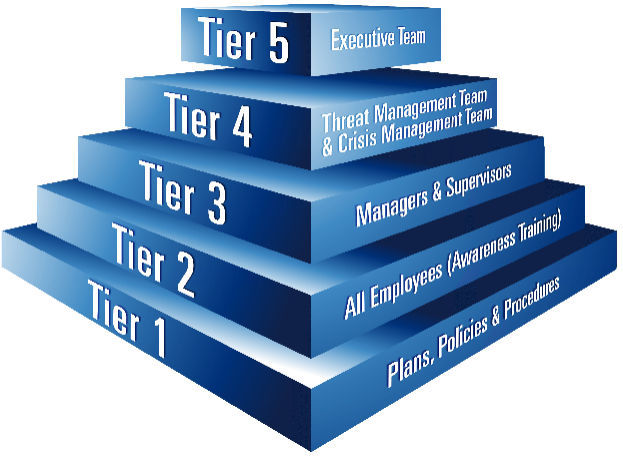Prepared not Scared: Workplace Violence, a Foreseeable Risk
Organizations are repeatedly reminded of the growing trend of financial costs, injuries and potential fatalities caused by workplace violence. Whether it’s a story on the nightly news or an incident in or near your workplace, it remains an issue that employers can no longer ignore. The question, then, becomes, "What can organizations do to mitigate this problem?" Some employers are having trouble deciding how to initiate conversations on their level of risk for an active assailant, partly because of their concern that it may promote fear in their employees. With the sad realization that workplace violence is not going away, more organizations are making the choice to take positive steps to prepare their workforce. Nearly two million workers in the American labor force are reportedly victims of a workplace violence incidents per year?
Sadly, it’s estimated that 25 percent of workplace violence goes unreported. Workplace violence results in approximately $130 billion in lost revenue every year. Forbes reports that business losses due to reduced productivity, injuries, lawsuits, and absenteeism are enormous. Moreover, a damaged reputation and brand often leads to a loss of customers.
Its imperative senior leaders take needed precautions to safeguard their workplaces, whether it be a home office, satellite locations, or remote worksites, from potential threats. By training employees at every level, the state of awareness, mitigation, and prevention opportunities increase substantially. Promoting a positive workplace culture and creating and enforcing workplace policies can help in recognizing conditions, situations, and behaviors that adversely affect worker morale, performance, and production and can lead to workplace conflict. By taking a proactive approach, organizations may be able to recognize those warning signs earlier and act to mitigate them before the violence occurs.
The Occupational Safety and Health Association (OSHA) now recognizes workplace violence as a workplace hazard. Moreover, an American National Standard, published by ASIS International, states that workplace violence will remain a “foreseeable risk” in the future. Many believe occurrences of violence are not always predictable, which may be true; however, there are almost always warning signs of its impending occurrence. In 2020 (revised in 2021), ASIS International, The Society for Human Resource Management (SHRM), as well as OSHA, published standards on policies, processes, and protocols that organizations can adopt to help identify, assess, respond to, and mitigate threating or intimidating behavior and violence affecting the workplace. Further, some states have enacted their own workplace violence legislation.
In like manner, the Joint Commission, which oversees accreditation of hospitals and other healthcare facilities, issued new and revised workplace violence standards that took effect in January 2022. These standards apply to all Joint Commission-accredited hospitals and critical access hospitals.
It’s important to understand that an employer could be liable under OSHA if a victim or a family member can prove the employer knew, or should have known, that violence could occur. Under OSHA, an employer may also be penalized if the US Secretary of Labor establishes an employer violated the General Duty Clause. In recent years, OSHA has applied the General Duty Clause in many workplace-injury cases where no specific standard was in effect.
Several components comprise a comprehensive Workplace Violence Prevention Program. It begins with a top-down commitment, which provides the impetus for effective implementation. Next, policies must be created and published to define requirements, roles, and responsibilities, and to create a framework for the program. In addition, training tailored specifically for employees, managers/ supervisors, and multidisciplinary threat management teams should be created to provide the appropriate tools at the appropriate levels of an organization.
Using a unique tiered approach, the Center for Personal Protection and Safety (CPPS) benchmarks prevailing “Best Practices,” existing compliance documents, and organizational cultures to focus on the five centers of gravity. A common question asked of CPPS is, “Does training really help in an active assailant situation?” The answer is yes because our cognitive recall will enable us to move quicker to learned survival response options. Information the brain feels is important is more likely to move to our long-term memory. Studies have shown important differences exist between the reactions of those who are trained and those who are not. The initial response to a violent incident is almost always startle and fear, which is experienced by both groups. But while an untrained individual will be overcome by fear, may often reach out and hold on to others for moral support, a trained individual will likely recall more effective response options and move with purposeful action. Finally, by developing a “Survival Mindset,” a protective shield comprised of “Awareness, “Preparation” and “Rehearsal” can help you manage those fears and emotions.

